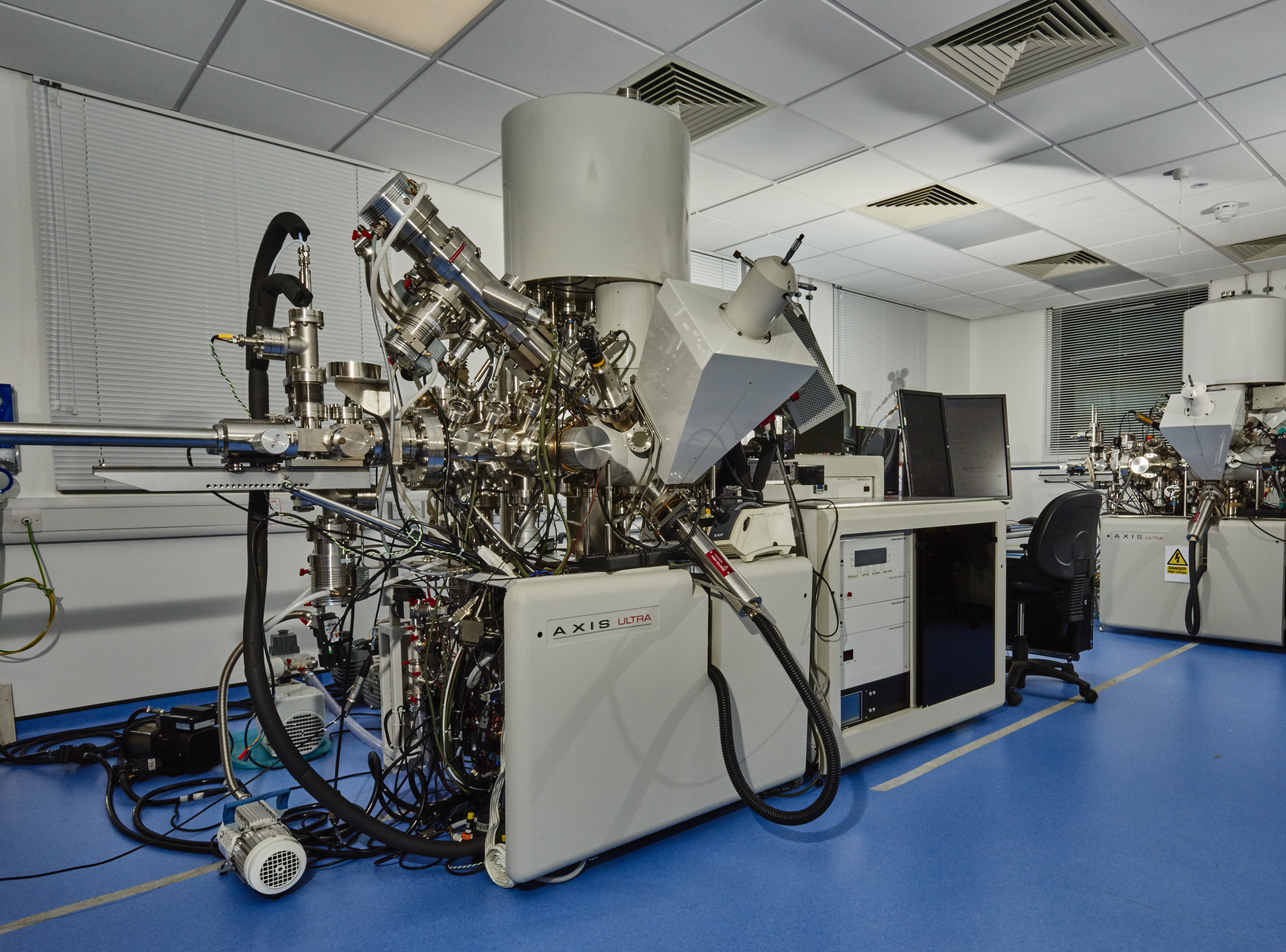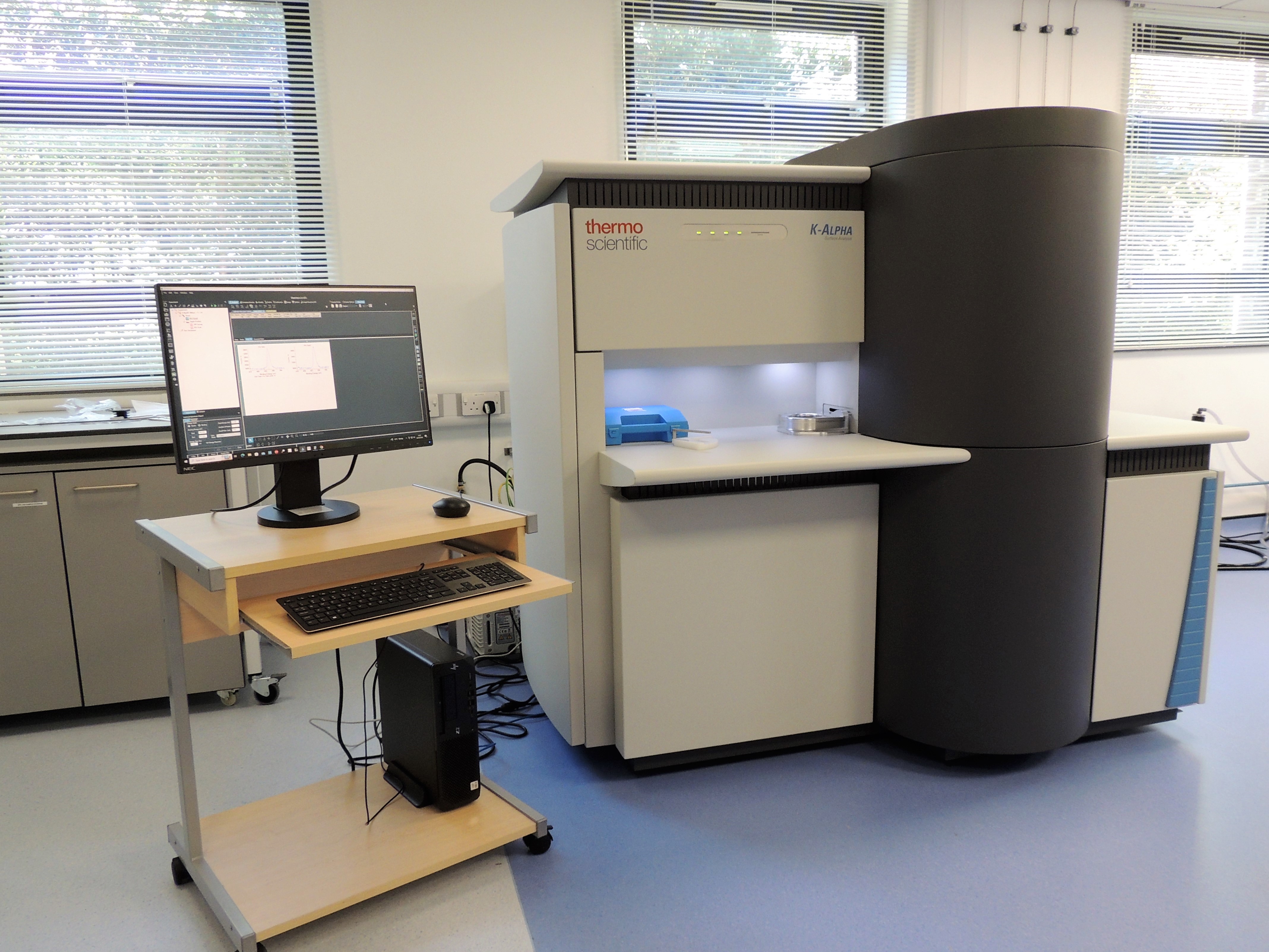X-ray Photoelectron Spectroscopy
X-ray Photoelectron Spectroscopy (XPS)
Kratos Liquid Phase Photoelectron Spectroscopy (LiPPS) available at the nmRC
X-ray Photoelectron Spectroscopy (XPS) Chemical Analysis
XPS is a surface sensitive chemical analysis technique that provides quantitative elemental characterisation of a sample.
Under ultra-high vacuum (UHV) samples are exposed to incident X-rays leading to the emission of core (inner shell) electrons. Each emitted electron will possess an energy specific to the element it originated from and it's chemical state. These emitted photoelectrons are therefore detected and measured in the spectrometer and the binding energy intensities related to the concentration of constituent elements. Consequently XPS can provide a quantitative analysis of surface composition, and discriminate between different oxidation states and chemical environments.
The nmRC is home to two multiuser XPS instruments equipped for versatile and multi-disciplinary research or commercial applications. For more information on the XPS facility at the nmRC see below, click here or contact us.
Kratos Liquid Phase Photoelectron Spectrometer (LiPPS)

Thermo Fisher K-Alpha Photoelectron Spectrometer

Kratos Liquid Phase Photoelectron Spectrometer (LiPPS)
Key Features
- Quantitative elemental composition.
- Empirical formula derivation.
- Depth profiling capability for z or 3D information.
- Chemical state identification.
- Electronic state binding energies and densities.
- Elemental mapping (Parallel XPS imaging).
- In-line mass spectrometry.
- Unique ionic liquids expertise.
Specifications
- Multiple monochromated X-ray sources including Al Kα emission at 1486.6 eV, Mg, or a high energy Ag source at 2984 eV.
- Argon gas cluster source for high resolution depth profiling of organic materials (biological samples and polymers).
- High throughput multi position programmable stage allows multiple samples in one experiment including a tilt stage for topographic samples.
- Magnetic immersion lens system allows the area of analysis to be defined by apertures.
- Electrostatic / magnetic lens system (hybrid lens) and a hemispherical analyser (CHA) to sort photoelectrons according to kinetic energy.
- Electron detection and counting with a triple channel plate and delay line detector (DLD).
- Heating and cooling capabilities.
- Electrochemistry stage for in situ work on ionic liquids.
Thermo Fisher K-Alpha Photoelectron Spectrometer
This instrument offers free access to UoN PhD researchers.
Key Features
- Quantitative elemental composition.
- High-resolution chemical state spectroscopy.
- Selectable area spectroscopy.
- Quantitative chemical imaging.
- Snapshot acquisition.
- Sputter depth profiling.
Specifications
- X-ray source is Al Kα emission at 1486.8 eV.
- Ion gun with energy range of 200 - 4000 eV.
- 180o double focussing hemisphercial analyser with 128-channel detector.
- Dual beam source charge compensation.
- 4-axis sample stage, 60 x 60 mm sample area, 20 mm maximum sample thickness.